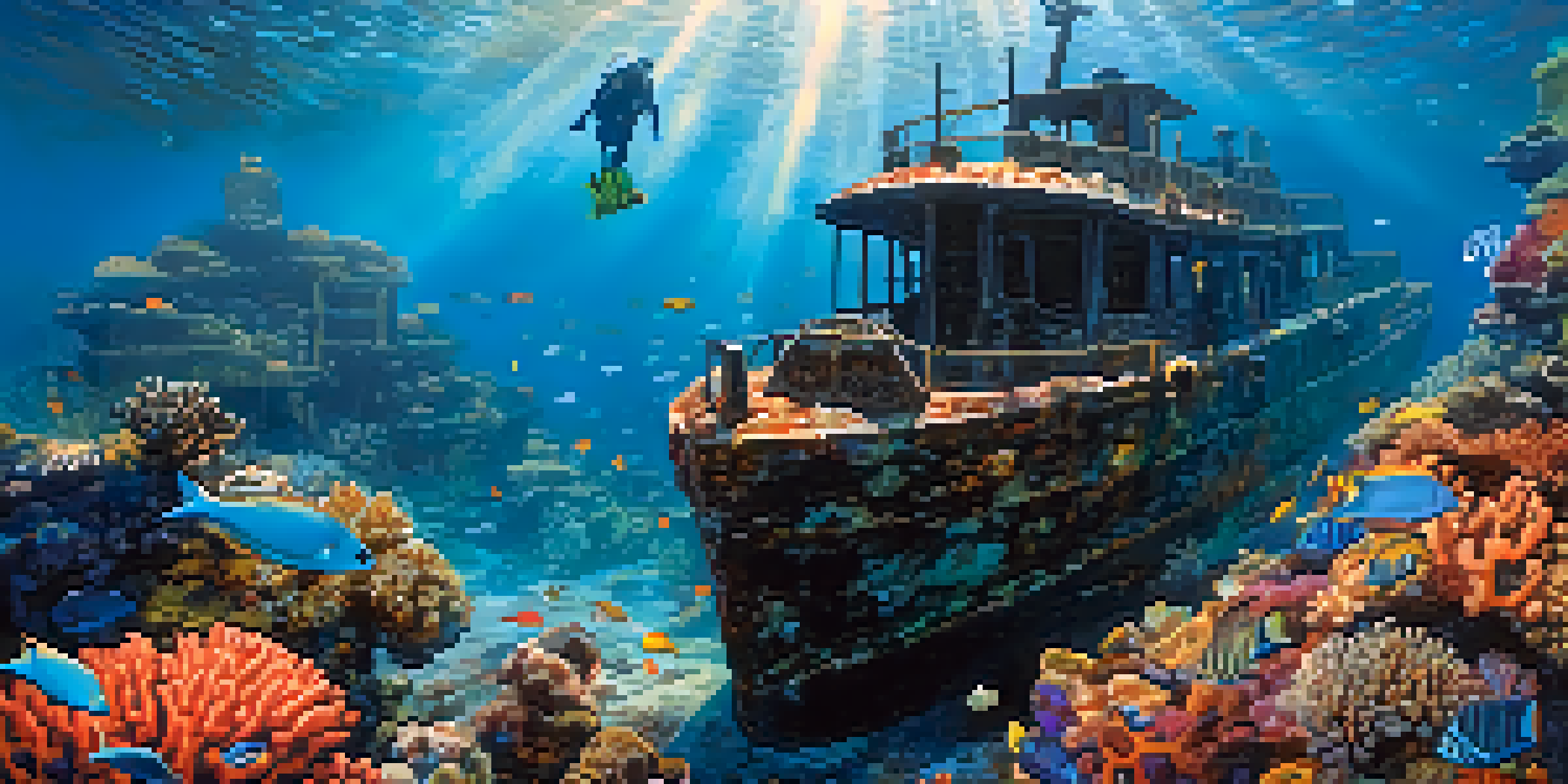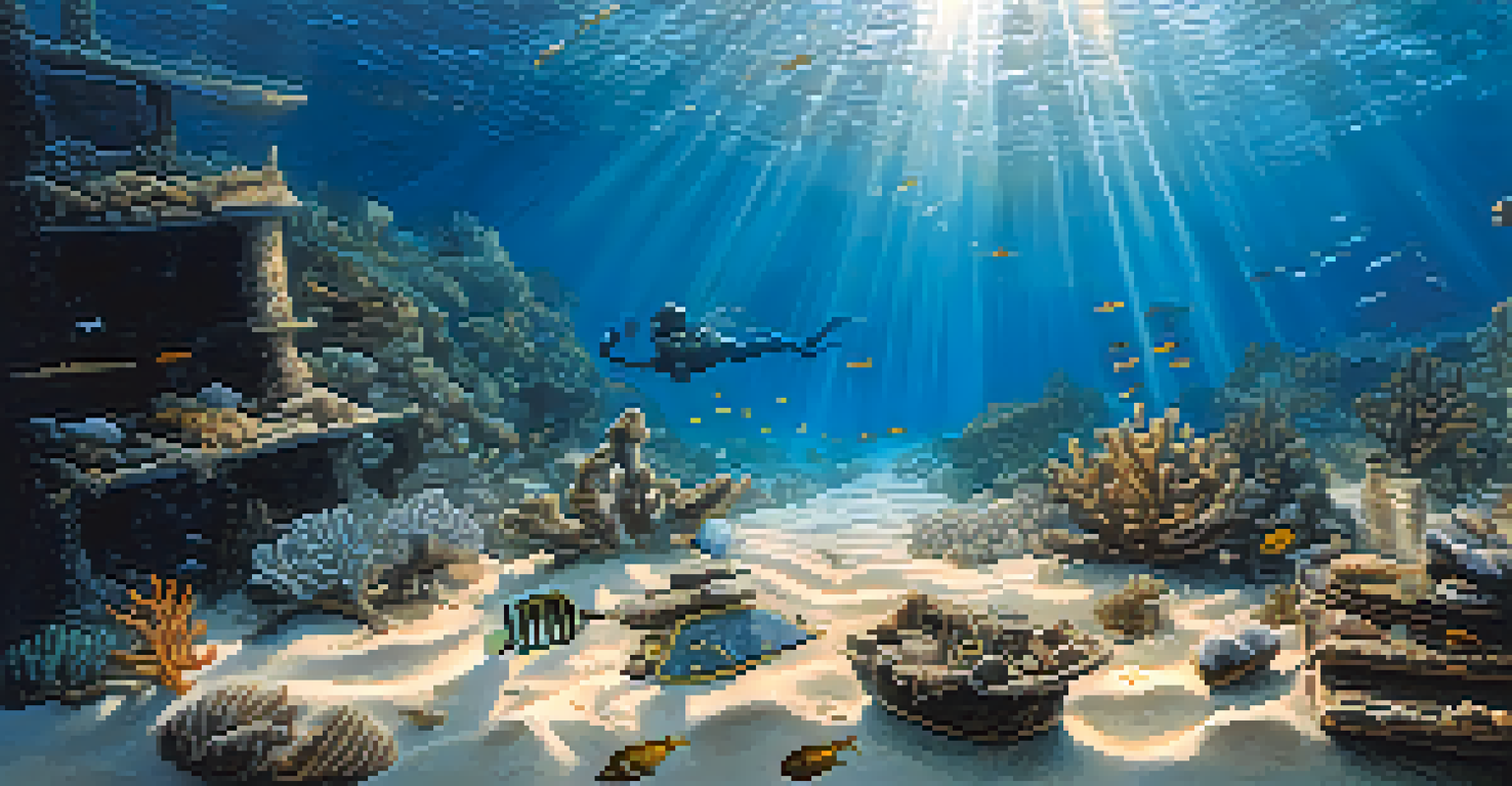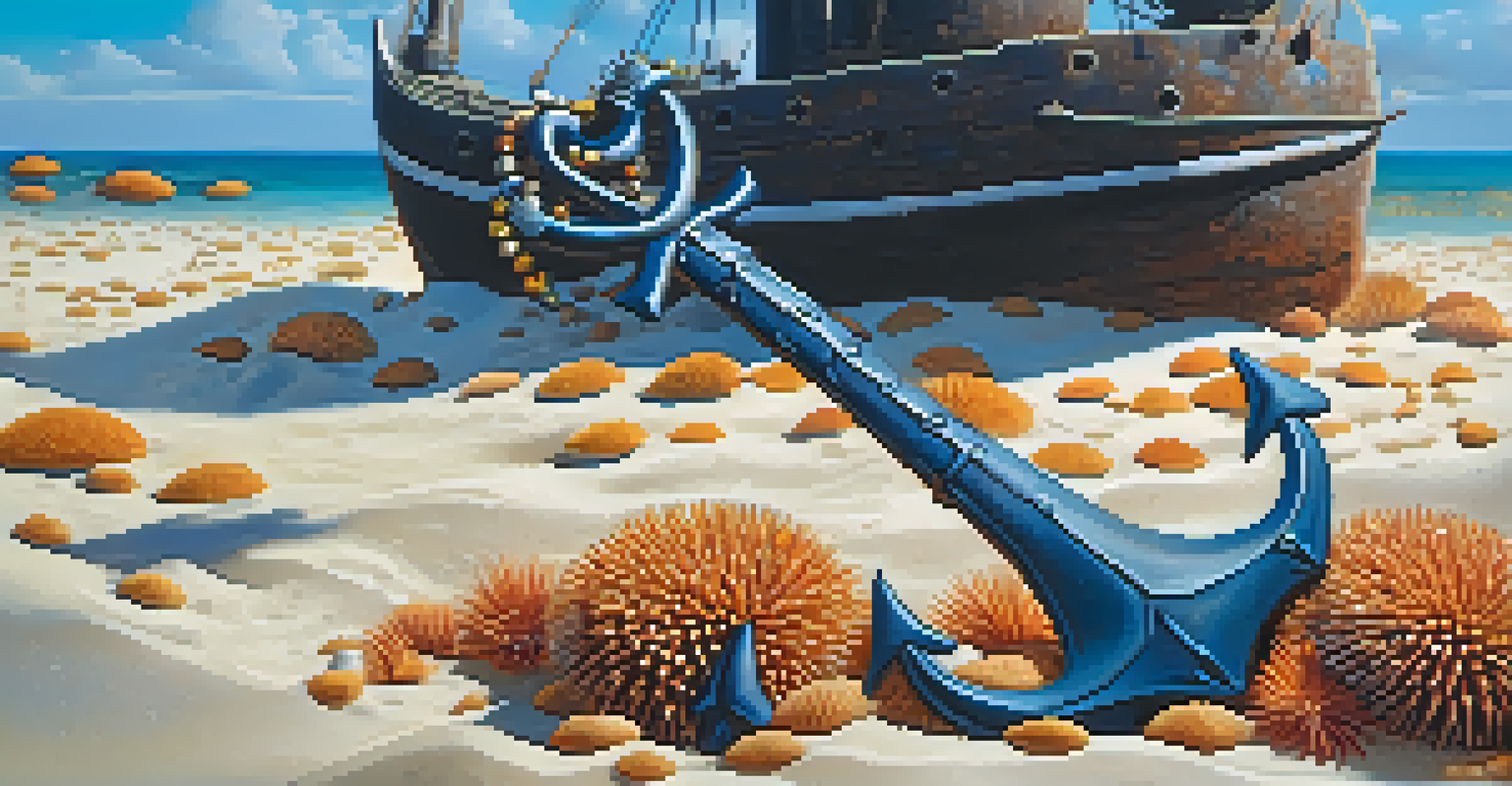Exploring Wreck Diving: History Beneath the Waves

What is Wreck Diving and Its Allure?
Wreck diving is an adventurous pursuit that involves exploring sunken ships and other submerged structures. These sites often hold remnants of history, telling stories of voyages, trade, and sometimes tragedy. It's not just about the thrill of diving; it's about connecting with the past and uncovering secrets that have been lost to time.
The sea, once it casts its spell, holds one in its net of wonder forever.
For many divers, the allure lies in the mystery of these underwater sites. Imagine swimming through a shipwreck, surrounded by marine life, while visualizing the sailors who once walked its decks. Each dive can feel like stepping into a time capsule, where every rusted bolt and broken mast has a tale to tell.
Additionally, wreck diving can be a unique opportunity for marine conservation. Many wrecks have become artificial reefs, providing habitats for various species. This dual aspect of adventure and ecological benefit makes wreck diving a rewarding experience for divers of all levels.
The Historical Significance of Shipwrecks
Shipwrecks are more than just remnants of vessels; they represent significant historical events. From battles fought at sea to commercial trade routes, these sites can offer insights into our maritime history. For instance, the sinking of the Titanic is not just a tragic event but also a lesson in safety regulations and technological advancements.

Explorers and historians often study wrecks to understand the past better. Artifacts recovered from these sites can shed light on the cultures and economies of the time. For example, ancient shipwrecks found in the Mediterranean have revealed trade patterns that existed thousands of years ago, enriching our understanding of ancient civilizations.
Wreck Diving: A Historical Journey
Wreck diving allows explorers to connect with maritime history through the stories and artifacts found in sunken vessels.
Moreover, wrecks can serve as reminders of human resilience and the dangers of the sea. Each ship has its own story, and as divers explore these underwater graveyards, they participate in preserving these narratives for future generations.
Getting Started with Wreck Diving
If you're intrigued by the idea of wreck diving, the first step is to get the right training. Many dive shops offer specific courses that focus on the skills needed to navigate wreck sites safely. These courses typically cover essential diving techniques, buoyancy control, and how to handle potential hazards, such as entanglement.
Wreck diving is not just about the thrill of the dive; it’s about connecting with history and exploring the stories that lie beneath the waves.
Before diving into a wreck, it's crucial to familiarize yourself with the site. Researching the ship's history, layout, and any known dangers can enhance your experience. Some divers even create a dive plan that outlines entry and exit points, ensuring they dive responsibly and safely.
Lastly, consider joining a community of wreck divers. Engaging with others who share your passion can provide valuable insights and tips. Plus, diving with experienced buddies can enhance safety and ensure a more enjoyable experience as you explore these fascinating underwater landscapes.
Essential Safety Tips for Wreck Diving
Safety is paramount when it comes to wreck diving. One of the key principles is to never dive alone; having a buddy system is essential for ensuring mutual safety. This way, you can support each other and respond more effectively should any issues arise during the dive.
It's also vital to be aware of your surroundings. Wrecks can contain sharp edges, unstable structures, and even debris that can pose risks to divers. Always approach a wreck with caution, checking for potential hazards before entering or swimming inside the structure.
Safety is Key in Wreck Diving
Prioritizing safety through proper training, buddy systems, and awareness of surroundings is essential for a successful wreck diving experience.
Lastly, pay attention to your dive equipment and limits. Ensure your gear is well-maintained and suitable for wreck diving conditions. Regularly check your air supply, and never push your limits; know when to turn back if conditions become unsafe.
Wreck Diving Locations Around the World
Wreck diving enthusiasts are fortunate to have numerous incredible sites to explore worldwide. Popular locations include the Great Lakes in North America, which boast hundreds of well-preserved shipwrecks. Each wreck tells its own story, making these dives both educational and thrilling.
Another famous destination is the Red Sea, known for its vibrant marine life and stunning wrecks like the Thistlegorm. This British cargo ship, sunk during World War II, is now a popular dive site filled with artifacts and a rich history that captivates divers.
In Europe, the Mediterranean Sea offers countless wrecks, from ancient galleys to modern naval ships. These sites not only provide breathtaking underwater scenery but also a glimpse into the maritime history of the region, making them a must-visit for any wreck diving aficionado.
Preserving Wreck Sites and Marine Life
As divers, we have a responsibility to protect wreck sites and the marine ecosystems they support. Many organizations advocate for responsible diving practices that minimize our impact on these precious underwater environments. This includes not touching artifacts and avoiding disturbing marine life that may have made the wreck their home.
Participating in underwater clean-up events or conservation projects can make a difference. These initiatives help preserve wrecks and their surrounding habitats while fostering a sense of community among divers. By taking part, you are not only enjoying your passion but also giving back to the ocean.
Protecting Underwater Ecosystems
Divers have a responsibility to preserve wreck sites and marine life, ensuring that these underwater treasures remain intact for future generations.
Ultimately, preserving these underwater sites ensures that future generations can experience the same wonders we do today. By diving responsibly and advocating for marine conservation, we can contribute to the health of our oceans and the stories waiting to be uncovered beneath the waves.
The Joy of Sharing Wreck Diving Experiences
Wreck diving is not just about the adventure; it's also about sharing the experience with others. Many divers love to document their dives through photos, videos, or journals. Sharing these stories can inspire others to explore the underwater world and appreciate its history.
Social media platforms have become popular spaces for divers to connect and share their experiences. By posting about your adventures, you can engage with a community of like-minded individuals who share your passion for wreck diving. These interactions can lead to new friendships and diving opportunities.

Additionally, sharing knowledge and experiences can help promote safe and responsible diving practices. By discussing your adventures, you contribute to a collective understanding of wreck diving, encouraging others to respect and protect these underwater treasures.